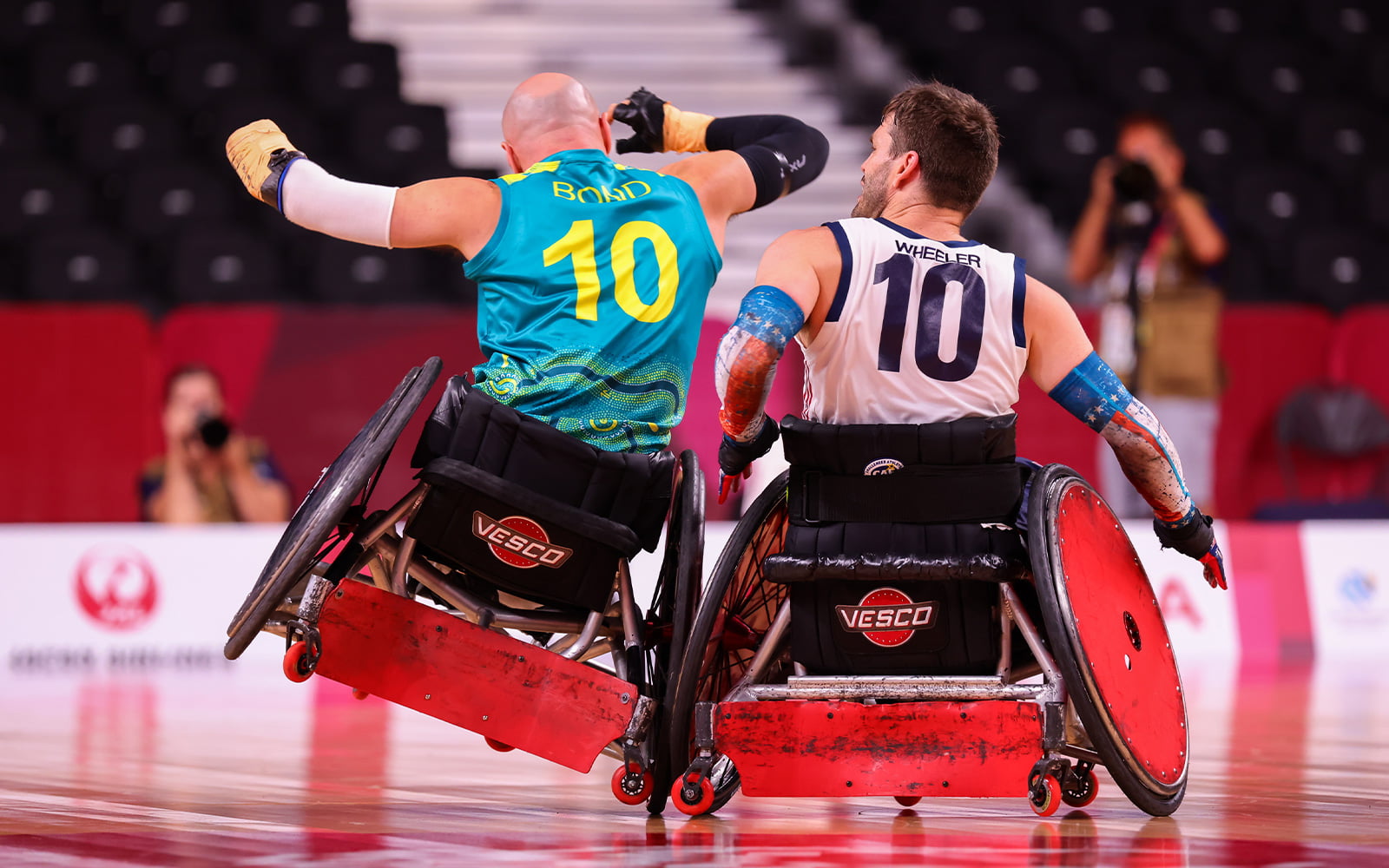On the highlight reels they’re slamming into opponents, weaving through defences and generally causing havoc. They’re the ‘big-dogs’ of wheelchair rugby, nearly always the scoring leaders and focus of external plaudits.
However Australia’s best 3.5-point classified players, Steelers greats Chris Bond and Ryley Batt, know their impact depends largely on the performance of teammates who grab less attention.
“Those who know the sport understand that good low pointers are essential,” Bond said. “When we have good low pointers, it makes my job much easier.
“The players who have limb deficiency, or amputees, are the main ball handlers, the number one and two on court, generally. It’s just the nature of having that extra strength because they’re not as limited in their body or nervous system and have full function of temperature control as well.
“But one of the beauties of our sport is that the classification system makes it inclusive. I can’t get on court without a low pointer being on. It’s a bit different to growing up playing able-bodied sport as a kid, but I think it teaches you to really value those players.
“It means there’s a mutual respect between the highs and the lows because they need each other to be on the court.”
Get involved in Wheelchair Rugby: Complete our Expression of Interest Form
Under the rules of wheelchair rugby, the classifications of the four players on court can add up to no more than eight points.
It means that if, say, Bond and Batt were both in the game, the other two players would need to be 0.5s, which tend to be players who have spinal cord injuries.
“Wheelchair rugby started as a sport for athletes who weren’t functional enough to play basketball,” Bond said. “I understand that ethos and people wanting to protect that. Some of the old-timers, the ‘trueists’ are not too happy that it’s gone beyond spinal cord injuries. But I think it’s made the sport a lot faster, more physical and it’s opened up in a way that I think enables you to really build a team around the high pointers.”
Read: Why Wheelchair Rugby Is The Best Fit For Lambird
Bond became an amputee at age 19 and said he didn’t see another amputee until he started playing Para-sport. In the 15-odd years since, he’s been part of two Paralympic gold medal-winning Australian teams, and two World Champion teams. Most recently he captained the Steelers to victory at the Championships in Denmark last year.
WORLD CHAMPIONS 🏆
— AUS Paralympic Team (@AUSParalympics) October 16, 2022
The Australian Steelers #WheelchairRugby team have defeated @usawchrugby 58 – 55 in the Gold Medal Match at the @ww_rugby World Champs.
Read all the reactions out of Vejle: https://t.co/a6MfLFCnBt
📸: Lars Møller#2022WRWC #VEJLE2022 pic.twitter.com/4KlpTHkLgQ
Bond and Batt are aiming for Paris 2024, but their days representing Australia can’t last forever.
Bond’s advice for potential high pointers is “give it a go”.
“The highlights are always the big hits and the crashes, but the game is actually very strategic and tactical,” he said.
“It’s fun, it’s safe and we need more high pointers, more people with limb deficiency and amputees in the game. We’re lacking in high pointers in Australia, so there’s room to come and join the sport. If you’re good enough and hungry enough, there are pathways to the Paralympic level.”
But it’s not just about the Paralympics. Wheelchair rugby is also open to players who aren’t eligible to be classified internationally.
“We still engage them, they can still play in our national league and some are invited to Aussie camps to help out,” Bond said. “There’s always a social comp where you can play week-to-week, regardless if you’re classifiable or not.”
Want to learn more? Check out our Wheelchair Rugby Information Page
By: David Sygall, Paralympics Australia
Posted: 24 May 2023


 Join AUS Squad
Join AUS Squad

